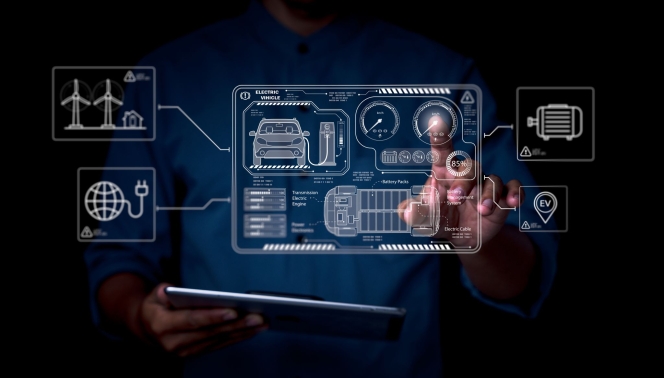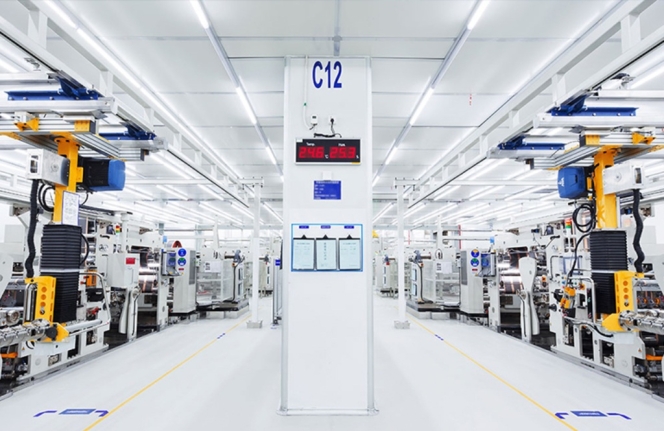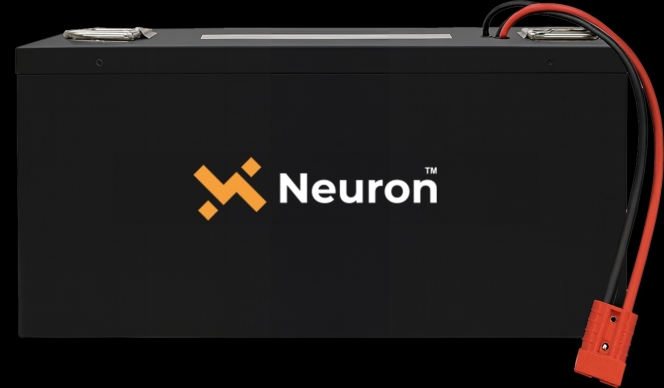
An interesting picture is emerging in India as the EV scene heats up. The big players like Bajaj Auto, TVS Motor Company and Hero MotoCorp and Honda Motorcycles & Scooters India have shed any reservation they would have had about India’s EV market to mark their presence. The movement of these big wigs in the 2-wheeler space is taking place amid a certain clout created by new entrants at the organised end of the EV market like Ather Energy and Ola Electric as well as at the unorganised end of the EV market by entrants like E-Ashwa, ADMS e-bikes, Miracle 5, etc.
What is turning the EV scene in India more interesting is how the small EV players that could be described as those belonging to the unorganised part, are organising themselves to take on the big wigs. A recent development in Maharashtra where the transport authorities seized and fined low-speed two-wheelers that could exceed the stipulated maximum speed of 25 kmph and possibly possessed batteries and motors that exceeded the capacity put down in the rules has led to the smaller EV players to organise themselves as an association that would help them deal with any such eventualities in the future. The treatment meted out to them during the event made them think of a strategy that would effectively make them portray themselves as bigger and stronger. Make them possess the ability to represent themselves better and to lobby effectively if the needs arises.
A similar development is taking place in the three-wheeler category as well. Starting of as small enterprises, electric three-wheeler manufacturers from across the country are beginning to organise themselves as they find that the bigger and better organised players like Piaggio and Ampere are beginning to corner a share of the electric three-wheeler market in the passenger as well as the cargo carrier level.
Moving up the value chain and taking to work closely with Indian suppliers, the smaller three-wheeler manufacturers are investing in better R&D, seeking help from specialised associates at the testing and components supply end to ensure that their vehicles meet the regulatory demand as well as the market expectations.
Smaller electric three-wheeler manufacturers are also working closely with financiers to drive sales while keeping an eye on the regulatory changes and announcement of incentives by states as they announce EV policies in line with the one that the Union Government has drawn. Drawing attention to the EV policy announced by the State of Haryana, Suman Mishra, CEO, Mahindra Electric Mobility, said that her ompany welcomes the move. Terming it as ground breaking, she averred, “What is encouraging is that there is a comprehensive EV policy backing this move. Slashing emissions from the road transport sector forms a pivotal part of India's efforts to de-carbonise its economy and a well-articulated, incentivised EV policy is crucial to creating a conducive environment for the adoption of EVs.”
As the bigger players like Mahindra and Piaggio continue to invest in network expansion, technology upgradation and development of products that are more efficient, the smaller players are taking to collaborations. They are working closely with components suppliers – many of whom are common to the bigger players – to ensure reliance on technology and to enhance their ability to sell reliable EVs. An emerging EV supply chain is almost ‘God-sent’ to the smaller Indian EV manufacturers. Also, the emergence of unique solutions providers like those that are supplying battery pack casing to facilitate easy swapping or charging of the battery or those that are making available test and certification facilities that would otherwise need high investments.
Opinions and feedbacks have been called for by an agency under the aegis of Niti Aayog to prepare a draft for battery swapping policy even as the BIS standard has been made mandatory for EV batteries. There is however a need to reconsider the battery dimension regulation as far as the terminals are concerned, it seems. An industry source mentioned that a new concept of sunken terminals which are safe and efficient rather than the lead-acid battery-like terminals said to be under consideration with appropriate protection show go a long way in revolutioning the use of lithium-ion batteries, he informed.
The battery swapping policy draft is expected to be made public by the end of July 2022 and a policy expected to be announced soon after. At the passenger vehicle level, it is the big wigs like MG Motors and Tata Motors who have been calling the shots. New entrants like BYD are also planting their feet in the market that is growing at a fair pace. As the charging infrastructure grows amid high fossil fuel prices, electric passenger vehicles are growing in the face of attractive incentives, a growing drive range and increase vehicle performance.
At the CV level too, it is a combination of established players like Tata Motors and new entrants like Olectra-BYD and JBM that have been calling the shots. The EV proliferation is at the bus-end of the market. The buyers are mostly city and state transport organisations. The act of purchasing electric buses is also helped by government initiatives like FAME II, which is claimed to be public transport oriented, are helping their proliferation. Given the complex nature of contracts for the supply of electric buses to government and semi-government organisations, it is the organised players with a deep understanding of the market that are at the forefront. What is surprising is how the new entrants like JBM and Olectra-BYD have succeeded in getting a strong hold. Their e-buses too are found along side the e-buses supplied by Tata Motors and Ashok Leyland in most cities in India.
EVs have been big levelling act in India, mentioned an industry source. He drew attention to how the smaller and bigger players are jostling for the same market space almost. A right thrust on infrastructure creation and an emphasis on generation of electricity from greener sources should help EVs to prove to an extent that their cost to the environment is lower than that of the fossil-fuel vehicles, he added. For EVs to be truly environmentally friendly, efforts are being for scientific recycling and processing of vehicles and their components. The small and big players are expected to work together to achieve this goal, making the EV ecosystem in India are ‘true levelling’ ground. Something, which the fossil-fuel intensive auto sector has so far been unsuccessful to create.
Trinseo Launches Fourth-Generation Binder For The Next Wave Of EV Batteries
- By MT Bureau
- December 03, 2025

Trinseo has introduced its latest innovation, the Fourth-Generation SBR Binder Platform, designed to meet the evolving demands of electric vehicles and battery energy storage systems. This development reflects the company's strategic focus on delivering high-performance materials essential for the global shift towards sustainable energy.
The platform results from advanced polymer science and collaboration with battery manufacturers, targeting key industry requirements such as increased energy density, superior durability and more efficient production. It provides a significant improvement in peel strength, enabling stronger electrode bonds, thicker coatings and higher manufacturing speeds. These attributes are vital for developing higher-capacity batteries that can extend driving range and improve storage solutions.
The inaugural product, VOLTABOND 109 Latex Binder, offers this next-generation performance with broad compatibility across various anode materials and manufacturing processes. Its design ensures excellent stability and low resistance, supporting faster charging and long-term reliability. To ensure robust supply, Trinseo will produce the platform locally within major global regions, enhancing responsiveness to battery production hubs.
Rooted in decades of expertise, this new platform establishes a foundation for future innovations tailored to diverse customer needs across the battery value chain.
CATL And Stellantis Begin Work On EUR 4.1 Billion Spanish Battery Plant
- By MT Bureau
- November 28, 2025

CATL and Stellantis broke ground on a EUR 4.1 billion battery plant in Figueruelas, Spain, on 26 November. The 50:50 joint venture will produce lithium-iron-phosphate battery cells and targets an annual production capacity of 50 GW/h.
The project, which is Spain’s largest battery factory, is backed by over EUR 300 million in EU funds, with production expected to start in late 2026.
According to unions, around 2,000 Chinese workers will help construct the site, a point of contention with local authorities and residents. Also, 3,000 Spanish staff are to be hired and trained later.
Spanish authorities and residents have voiced concerns about job opportunities for local workers and potential strain from the influx of foreign employees. CATL Vice President Meng Xiangfeng said earlier in November the company needed experienced technicians to build and fine-tune production lines, with plans to train local workers to take over operations gradually.
David Romeral, Director General of CAAR Aragon, a network of automotive businesses in the region, said: “We don’t know this technology, these components – we’ve never made them before. They’re years ahead of us. All we can do is watch and learn.”
The regional government is organising work permits for arriving workers while seeking to attract battery supply chain companies to Aragon. Some Chinese technicians and managers have already arrived, with several hundred more expected by year-end and nearly 2,000 by the end of next year.
CATL’s approach contrasts with its Hungarian site in Debrecen, where it hired mostly locals to build its European plant. However, a lack of local workers caused production to be delayed from late 2025 into mid-2026. The Figueruelas facility will serve as CATL’s third European manufacturing operation, alongside the Hungarian plant and one in Germany.
- Neuron Energy
- Equanimity Ventures
- Rajiv Dadlani Group
- Thackersay Family Office
- Chona Family Office
- Pratik Kamdar
- Rajesh Sehgal
- Rajiv Dadlani
Neuron Energy Secures INR 310 Million To Expand EV Battery Manufacturing For Four-Wheelers & Buses
- By MT Bureau
- November 27, 2025

Neuron Energy, an EV battery manufacturer, has raised INR 310 million in a Pre-Series B funding round led by Equanimity Ventures, Rajiv Dadlani Group, Thackersay Family Office and Chona Family Office, with participation from Family Offices and HNI investors. With this, Neuron Energy has raised INR 810 million to date.
The funding will be used to expand Neuron Energy’s manufacturing capacity to 3 GWh and to establish a fully automated, large-scale battery facility for electric four-wheelers and buses at Chakan, Pune. The capital will also strengthen the company’s R&D capabilities, accelerate domestic growth, and broaden its footprint in international markets.
Pratik Kamdar, CEO and Co-Founder, Neuron Energy, said, “This Pre-Series B round is a defining step in our mission to industrialise world-class battery manufacturing in India. As EV adoption accelerates, we are focused on building capacity, embedding automation, and pushing the boundaries of performance and reliability. This investment ensures we can deliver at scale, both in India and globally.”
The company said it operates with a low-CapEx and low-OpEx business model. It has been growing profitably year-on-year and is on track to achieve INR 2 billion in revenue this year. The company is also confident of achieving sales of over INR 9 billion, with profitability, over the next few years.
Rajesh Sehgal of Equanimity Ventures, added, "We see immense potential in Neuron Energy’s approach to EV battery innovation and scalability. Their focus on quality, automation, and energy efficiency aligns with the evolving demands of the EV industry in India and beyond. We are proud to support their next phase of growth as they scale into new vehicle categories and manufacturing capacities."
The new facility reinforces the company’s position in two-wheeler EV batteries and signals a strategic entry into heavier vehicle segments. This supports Neuron’s vision to become a comprehensive EV battery solutions provider.
Rajiv Dadlani, from the Family Office of the Rajiv Dadlani Group, said, "Neuron Energy demonstrates remarkable potential to become the market leader, with their renewed focus, in delivering top-quality products. The company and its founders are highly committed to delivering rigorously tested and safe-to-use Li-Ion smart batteries. We are confident that they will continue to thrive and set new standards in the industry."
Mahindra Intros XEV 9S Electric 7-Seater SUV At INR 1.99 Million, Deliveries From 23 January
- By MT Bureau
- November 27, 2025

Mahindra has launched the XEV 9S, an electric 7-seater SUV built on the INGLO platform, with prices starting at INR 1.99 million (ex-showroom). The XEV 9S is powered by MAIA, described as India’s fastest automotive mind.
The EV comes with a 70 kWh battery, delivering a power of 180 kW and 380 Nm of torque. It offers a claimed real-world range of 500 km from its LFP battery, which comes with a Lifetime Warranty. The SUV is stated to be the fastest 7-seater in its class, reaching zero to 100 kmph in 7.0 seconds, with a 202 kmph top speed.
The fully-loaded Pack Three Above 79 kWh variant is priced at INR 2.94 million ex-showroom with bookings open on 14 January 2026 and deliveries starting on 23 January 2026.
R Velusamy, President - Automotive Business, Mahindra & Mahindra and Managing Director, Mahindra Electric Automobile, said, “We have always believed that technology is meaningful only when it expands human possibility. The XEV 9S built on the INGLO electric origin platform does exactly that by creatin space – more than anyone else and gives a smooth and noise free ride. THE MAIA brain enables many of its high-tech features, making it the most advanced offering for its price.”
Nalinikanth Gollagunta, Chief Executive Officer - Automotive Division, Mahindra & Mahindra and Executive Director, Mahindra Electric Automobile, said, “The future of Indian mobility will belong to brands that don’t just electrify vehicles, but reimagine categories. With the XEV 9S, we’re not just playing in the EV segment, we’re expanding it. This SUV signals the start of a BIG new electric era for Mahindra - one built on scale, on purpose, and on a deep understanding of how India moves. The attractive prices starting at ₹ 19.95 Lakh make a very high-tech product accessible, with bookings opening on Jan 14 and deliveries start on Jan 23.”
The XEV 9S is an expression of Mahindra’s Heartcore Design philosophy, featuring a stance, lines, a gloss finish and interiors. The vehicle is designed to be silent on wheels.
Key highlights include:
- Space: Offers 4,076-litre of cabin space (for front and second row), boot space up to 527-litre and 150-litre of Frunk space. The third-row features 50:50 split seats.
- Suspension: Features Intelligent Adaptive dampers with i-Link at the front and 5-Link independent suspension at the rear.
- Driver Aids: Includes L2+ ADAS with five Radars and one Vision Camera, Driver Drowsiness Detection with DOMS (Eyedentity) and Secure360 Pro for live view and recording.
- Interior Comfort: Features Powered Boss Mode, ventilated second row seats, recline and sliding adjustment, sunshade for second row windows, Acoustic ‘Laminated’ Glass and wireless phone charging.
- Technology: Equipped with Brake by Wire with IEB, High Power Steering with VGR, VisionX – AR HUD, AutoPark Assist, and 140 features including Digital Key, NFC and Charge Scheduler.
- Entertainment: Includes a 16-Speaker Harman Kardon Audio system with Dolby Atmos, three 31.24 cm screens, 5G Connectivity and Fun & Work Apps.
- Efficiency: Running costs are INR 1.2 per km, with maintenance costs of INR 40 paise per kilometre and negligible road tax. Business owners benefit from 40 percent depreciation.
Pratap Bose, Chief Design & Creative Officer - Auto & Farm Sectors, Mahindra & Mahindra, said, “Designing the XEV 9S wasn’t about adding lines to a surface, it was about shaping a feeling. We wanted it to feel like stepping into a personal sanctuary, yet one that carries the pulse of modern India. Electric gave us the canvas; INGLO gave us the freedom to sculpt light, space and comfort. The result is an SUV that wears its size with grace and its technology with humility. It’s expressive, it’s calm, and it’s unmistakably Mahindra - built for a nation whose aspirations are only getting bigger.”






Comments (0)
ADD COMMENT